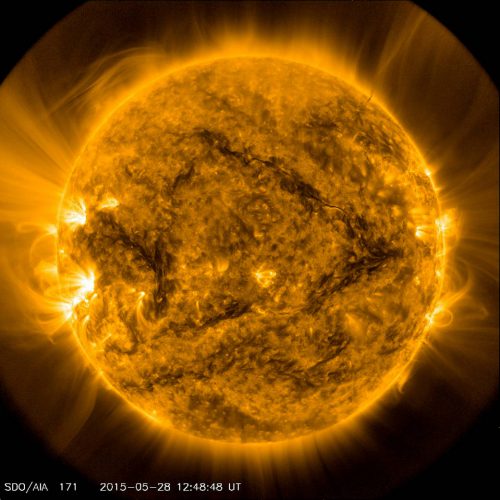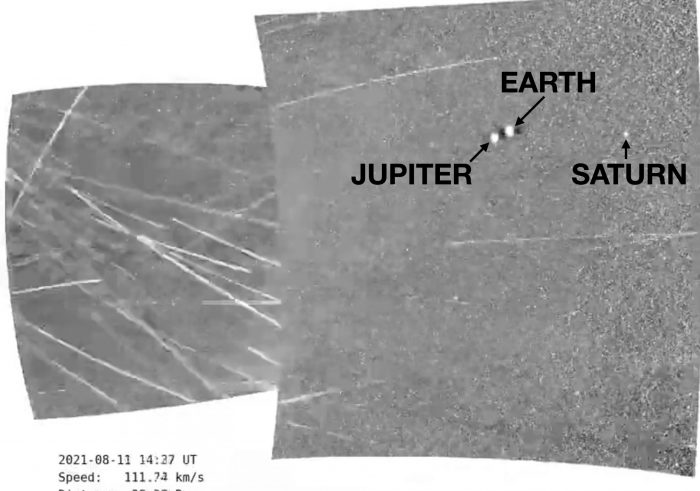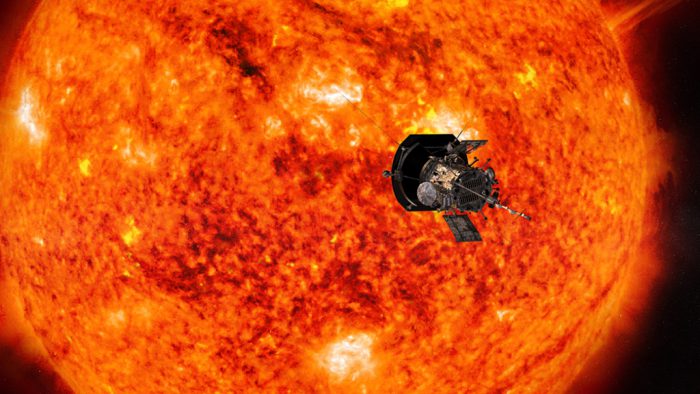In ancient Greek myths, the story of Icarus warned us of the dangers of flying too close to the Sun. In the myth, Icarus' trip was cut short thanks to the Sun's heat melting the wax that bound his wings together. The feathers fell away and, well ... Whoops!
And clearly, back here in the 21st century, NASA has been reading their Greek myths and taking notes. The big lesson? If you're going to fly to the Sun, don't use wax.
Thanks to this keen bit of learning—as well as a lot of other exceptional science—its Parker Solar Probe has been a huge success! In case you've not heard, this spacecraft—which launched in August of 2018—is literally on a mission to the Sun. Of course, it cannot land there, but it is attempting to get closer than ever before. And this means flying through the Sun's corona.
Hot crown

An image showing the Sun's corona—it actually extends much, much further than in this picture. (NASA)
The corona (which means "crown" in Latin) is something like the Sun's atmosphere. It is a massive aura of plasma (ionized gas) that extends for many millions of kilometres above the surface of the star. Even more amazing, it is MUCH hotter than the surface of the Sun—between 1 and 3 million Kelvin.
To combat these violent temperatures, NASA designed the Parker Solar Probe to not only be free of wax, but be on the cutting edge of heat resistance tech (we wrote in greater detail about these features here). In April 2021, the craft was put to the ultimate test—an orbit that moved it through the corona.
Not only did it survive the trip intact, it went back through in August, and again in November! In total, it is scheduled to make 15 more trips through the corona. Wow!
First footage released
The point of visiting the corona is to get firsthand data about exactly what is going on inside this intense, super heated cloud of energy. As NASA continues to pore over the data Parker has found, it has released actual footage from the August 2021 trip and it is unlike anything we've ever seen before.
Have a look below!
'Streaming' video
So what are we seeing here? The streaking points of light are known as coronal streamers. These are looping lines of electrically charged matter that glow thanks to being overflowing with electrons. Zzzzzzap!
Then in the background? That is the beauty of space! This includes the Milky Way (seen at 0:02) and even US! Yep, you can spy Earth—along with several other planets—as this stunning film plays out.

Hey! We photobombed the Parker Space Probe! (Grant Tremblay/Twitter)
Watch it again and again! There's so much to discover.
 An artist's impression of the Parker Solar Probe approaching the Sun. We now have real images from the probe's journey and it is amazing! (NASA/Johns Hopkins APL/Steve Gribben)
An artist's impression of the Parker Solar Probe approaching the Sun. We now have real images from the probe's journey and it is amazing! (NASA/Johns Hopkins APL/Steve Gribben)









